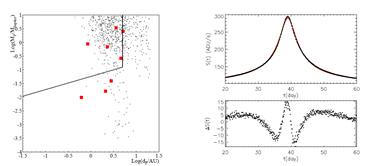Astronomers Discover Medium-Sized Class of Black Holes

It's the Goldilocks variety of black holes: not too big and not too small.
The new source HLX-1, the light blue object to the top left of the galactic bulge, is the ambassador for a new class of black holes, more than 500 times the mass of the Sun. It lies on the periphery of the edge-on spiral galaxy ESO 243-49, about 290 million light years from Earth.
(...)
Read the rest of Astronomers Discover Medium-Sized Class of Black Holes (305 words)
Device Makes Radio Waves Travel Faster Than Light
Polarization Synchrotron. Credit: Singleton, et al., via Current.com
A scientist has created a gadget that can make radio waves travel faster than light. Einstein predicted that particles and information can't travel faster than the speed of light, but phenomena like radio wav
 es are a different story, said John Singleton, who works at the Los Alamos National Laboratory. The polarization synchrotron combines the waves with a rapidly spinning magnetic field, and the result could explain why pulsars — which are super-dense spinning stars that are a subclass of neutron stars — emit such powerful signals, a phenomenon that has baffled many scientists.
es are a different story, said John Singleton, who works at the Los Alamos National Laboratory. The polarization synchrotron combines the waves with a rapidly spinning magnetic field, and the result could explain why pulsars — which are super-dense spinning stars that are a subclass of neutron stars — emit such powerful signals, a phenomenon that has baffled many scientists. Singleton said the polarization synchrotron basically abuses radio waves so severely that they finally give in and travel faster than light. This may be what happens in pulsars, as well.
(...)
Read the rest of Device Makes Radio Waves Travel Faster Than Light (356 words)
Landforms Indicate
Remember the polygon-shaped landforms at Mars north polar region that the Phoenix lander studied? The polygons are produced by seasonal expansion and contraction of ground ice, and these shapes have been found in other regions on Mars as well. New studies of images from the HiRISE camera on the Mars Reconnaissance Orbiter indicates that the Martian surface near the equator experienced freeze-thaw cycles as recently as 2 million years ago. This means Mars had significantly warmer weather in its recent past, and has not been locked in permafrost conditions for billions of years as had been previously thought.
(...)
Read the rest of Landforms Indicate "Recent" Warm Weather on Mars (294 words)
Book Review: How To Live On Mars
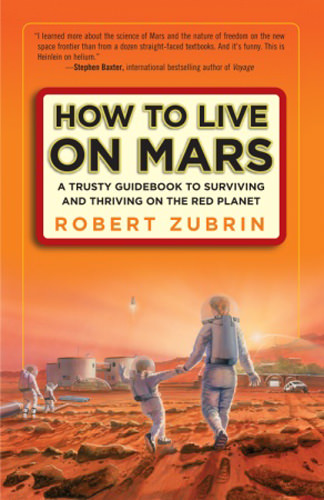
With all the probes recently landing on Mars, it's no wonder we feel that the planet is close enough to vacation there. Robert Zubrin has such a scheme already in place for his book entitled "How to Live on Mars – A Trusty Guidebook to Surviving and Thriving on the Red Planet". Though vacationers are welcome, he much more expects the arrival of immigrants who are ready and raring to put spade into ground for a homestead of the future.
(...)
Read the rest of Book Review: How To Live On Mars (465 words)
NASA Science News for July 3, 2009
The International Space Station (ISS) is about to make a remarkable series of flybys over the United States. Beginning this 4th of July weekend, the station will appear once, twice, and sometimes three times a day for many days in a row.
FULL STORY at
http://science.nasa.gov/headlines/y2009/03jul_sightings.htm?list1035898
NASA Science News for June 26, 2009
Astronauts are looking forward to an unprecedented view of the cosmos when the largest window ever built for space is installed on the International Space Station.
FULL STORY at
http://science.nasa.gov/headlines/y2009/26jun_cupola.htm?list1035898
NASA Science News for June 19, 2009
In the aftermath of a recent, deadly earthquake, the NASA-led SERVIR program orchestrated use of satellite data to show Central American disaster officials where help was needed most.
FULL STORY at
http://science.nasa.gov/headlines/y2009/18jun_servir.htm?list1035898
NASA Science News for June 17, 2009
Where have all the sunspots gone? Scientists studying a jet stream deep inside the sun may have found the answer.
FULL STORY at
http://science.nasa.gov/headlines/y2009/17jun_jetstream.htm?list1035898
NASA Science News for June 15, 2009
With NASA poised to launch the world's most famous treadmill (COLBERT) to the International Space Station, an astronaut describes what it's like to run in space where sweat floats and there is no gravity to hold your feet to the ground.
FULL STORY at
http://science.nasa.gov/headlines/y2009/15jun_running.htm?list1035898
First Extra-Galactic Planet May Have Been Detected
Using a technique called Pixel-lensing, a group of astronomers in Italy may have detected a planet orbiting another star. But this planet is unique among the 300-plus exoplanets discovered so far, as it and its parent star are in another galaxy. The Andromeda Galaxy, to be exact. Technically, the star in M31 was found to have a companion about 6 times the mass of Jupiter, so it could be either a brown dwarf or a planet. But either way, this is a remarkable feat, to find an object of that size in another galaxy.
(...)
Read the rest of First Extra-Galactic Planet May Have Been Detected (331 words)
Astronomers Announce First Newborn Stars at Milky Way’s Core

The Galactic Center. Credit: Suzan Stolovy (SSC/Caltech), JPL-Caltech, NASA
Astronomers have found the first evidence of newborn stars at the center of the Milky Way, a region once thought to be inhospitable to the formation of new stars.
Solange Ramirez, the principal investigator of the research program at NASA’s Exoplanet Science Institute at Caltech, announced three objects during a press conference today as part of the 214th meeting of the American Astronomical Society meeting in Pasadena.
“These baby stars … are stars that have just ignited their core, and are just starting to produce light,” she said. “It is a very early phase.”
(...)
Read the rest of Astronomers Announce First Newborn Stars at Milky Way’s Core (513 words)
Lunar, Solar Eclipses Hold Secrets to Other Worlds
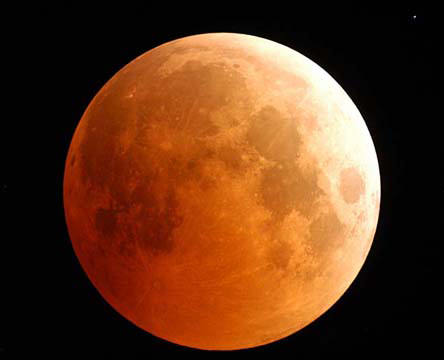
Total Lunar Eclipse, 2004. Credit: Fred Espenak
Want to know about the atmospheres of planets around other stars, and the stars themselves?
Start at home.
A pair of papers in this week’s issue of Nature is advocating continued studies of both lunar eclipses, when the Moon transits Earth’s shadow, and solar eclipses — when the Moon comes directly between Earth and the sun.
(...)
Read the rest of Lunar, Solar Eclipses Hold Secrets to Other Worlds (382 words)
Where In The Universe #57
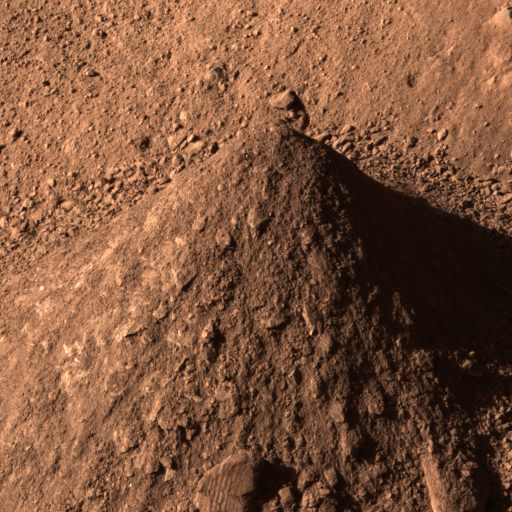
Are you ready for another Where In The Universe Challenge? Take a look and see if you can name where in the Universe this image is from. Give yourself extra points if you can name the spacecraft responsible for the image. As usual, we’ll provide the image today, but won’t reveal the answer until tomorrow. This gives you a chance to mull over the image and provide your answer/guess in the comment section. Please, no links or extensive explanations of what you think this is — give everyone the chance to guess.
(...)
Read the rest of Where In The Universe #57 (0 words)
New Technique Reveals Ages of Millisecond Pulsars

Astronomers have developed a new technique to accurately determine the ages of millisecond pulsars, the fastest-spinning stars in the universe. The standard method for estimating pulsar ages is known to yield unreliable results, especially for the fast-spinning millisecond pulsars, said Bülent Kiziltan, a graduate student in astronomy and astrophysics at University of California Sant a Cruz. “An accurate determination of pulsar ages is of fundamental importance, because it has ramifications for understanding the formation and evolution of pulsars, the physics of neutron stars, and other areas,” he said.
(...)
Read the rest of New Technique Reveals Ages of Millisecond Pulsars (400 words)
“Dark” Gamma-Ray Bursts Shed Light on Star Formation
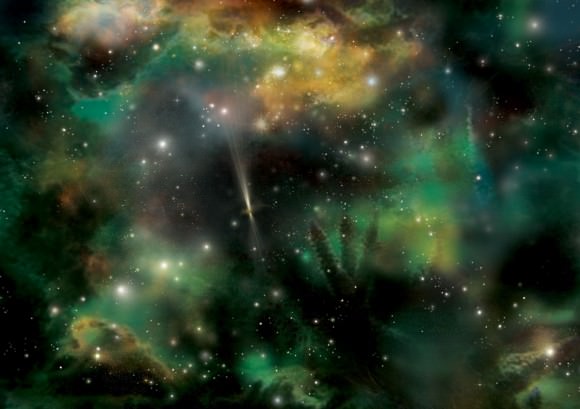
Thanks to the Swift satellite and several ground based optical telescopes, astronomers are learning more about so-called “dark” gamma-ray bursts, which are bright in gamma- and X-ray emissions but with little or no visible light. These dark bursts are also providing astronomers with insights on finding areas of star formation that are hidden by dust. “Our study provides compelling evidence that a large fraction of star formation in the universe is hidden by dust in galaxies that do not appear otherwise dusty,” said Joshua Bloom, associate professor of astronomy at UC Berkeley and senior author of the study, who presented his findings at the American Astronomical Society meeting in California.
(...)
Read the rest of “Dark” Gamma-Ray Bursts Shed Light on Star Formation (661 words)

